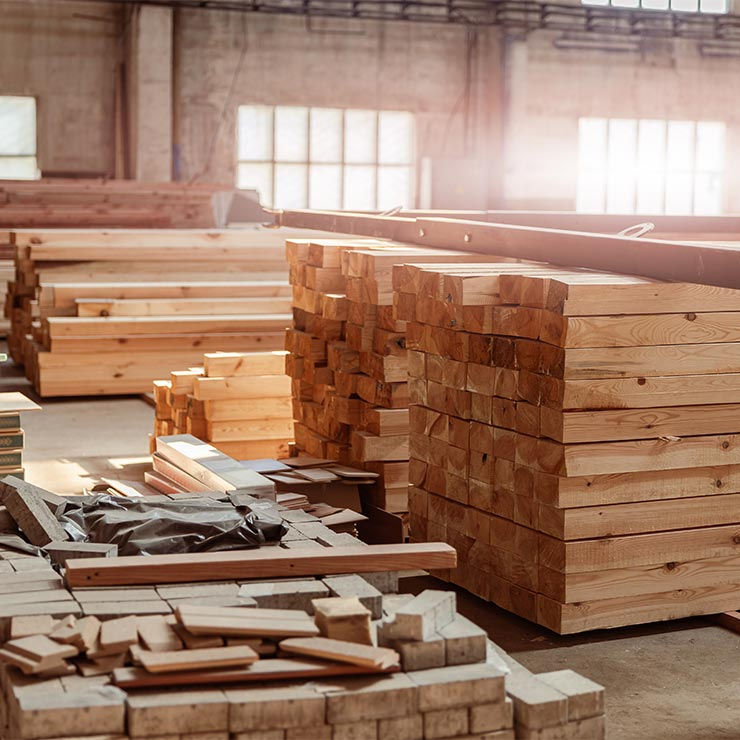How Does Engineered Wood Compare to Solid Timber?
- Jace Wong
- Jul 28
- 4 min read
Updated: Jul 29

People often compare engineered wood and solid timber when choosing wooden flooring. While both materials look like real wood, they perform differently. Some floors require more maintenance, some are easier to install, and others last longer in high-frequently use areas. The right choice depends on the room's needs and how the floor should perform over time.
What is Engineered Wood?
Engineered wood combines a real hardwood top layer with a durable plywood core for added strength. Manufacturers press these layers together to create a solid floor that resists bending or swelling. It keeps the warm look of solid wood while standing up to changes in heat and damp air. This type of flooring fits many rooms and handles daily use with strength, style, and lasting performance.
This blog explains the differences between engineered wood flooring and timber flooring. It focuses on how each one works and what makes them valuable.
1. Core Composition and Structure
How builders construct each floor makes a big difference in how it performs. Engineered wood uses layers. The top part shows real wood, and the bottom parts are stacked together using plywood. This build keeps it steady and strong.
Solid timber comes from one piece of wood cut straight from a tree. Because it comes from only one block, it can twist or change shape when the air is too wet or dry. Engineered wood stays steadier in hot or damp weather. That makes it easier to use in places where the temperature often changes.
2. Installation Process and Suitability
How the floor gets placed on the ground matters as much as what it's made of. One type might suit your room better, depending on how quickly it needs to be laid and where.
Engineered wood works with many surfaces. You can lay it over tiles, concrete, or even another floor.
● It fits well with click-lock, glue, or nails
● Handles warm floor heating systems without damage
● Needs little time to adjust to the room before use
Timber flooring needs more steps. It must first stay in the room to get used to the air. It must get nailed to a wooden base. That makes the job take longer and requires more skill. Engineered wood makes the job faster. It works in more kinds of places. Timber flooring takes more care but gives a strong, lasting result once it's done right.
3. Surface Texture and Visual Character
Even though both floor types look like wood, the way they show grain and lines is a little different. Solid timber shows the real marks from the tree. It has small lines and curves that give it an authentic wood feel.
Engineered wood copies that look. It shows great patterns, too, but the layers underneath are different. New ways to make floors now help engineered wood match solid wood in looks. Many people can't even tell the difference unless they look closer. That's how well-made engineered wood flooring has become.
4. Durability and Resistance to Conditions
Some floors hold up better in wet or dry air. Others can shift or bend over time. You want a floor that can handle all kinds of weather inside your home. Engineered wood keeps its shape well. It doesn't swell or crack easily.
● It doesn't bend or open when the air gets damp
● Holds up better than timber in moist rooms
● Works in places where the temperature changes often
Timber flooring is very strong, but it’s more affected by changes in weather. Shifts in temperature and humidity can cause small gaps or raised spots over time. Engineered wood, on the other hand, stays more stable where timber might move. This makes engineered wood a reliable choice for homes with rooms that heat up or cool down often.
5. Maintenance and Upkeep
Taking care of wood floors helps them last longer. It also keeps them looking clean and nice. How you clean each type of floor depends on how it's made.
Engineered wood comes ready with a finish that protects it from dirt and marks. You sweep and wipe it with a damp cloth when needed. Deep scratches are harder to fix, but the surface stays smooth with care.
Timber floors allow you to sand them many times. That helps when they get worn out or scraped. You can make them look new again if you take the time. Both types need basic cleaning. However, engineered wood asks for less over time, while timber needs more fixing as it ages.
6. Cost, Value, and Investment
The price of a floor can change the way people choose. Some floors initially cost more, while others save money but do the job well.
Engineered wood often costs less to buy and install.
● Saves money while still looking high-end
● Needs less work to get it ready for use
● Fits in homes without spending too much
Timber floors cost more because they use solid wood. But they last longer and can be fixed up many times. This helps them stay strong and stunning for years, even in busy areas. People who want a great look and a better price may lean toward engineered wood. Others may pick timber flooring for that complete wood feel and don't mind spending more.
Conclusion
Choosing between engineered wood and solid timber involves more than just considering the floor’s appearance. Both options deliver excellent results but perform best in different ways. Engineered wood flooring offers consistent durability, easy maintenance, and straightforward installation. Solid timber flooring, on the other hand, provides a rich, natural wood feel and long-lasting strength.
Each type has its own unique features and benefits. The right choice depends on the specific needs of your space. Understanding these details helps you make an informed decision. With the right choice, your floor will remain strong, stable, and beautiful for years to come.





Comments